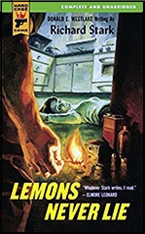Mon 18 Mar 2019
Pulp PI Stories I’m Reading, Selected by David Vineyard: CLEVE F. ADAMS “Flowers for Violet.”
Posted by Steve under Pulp Fiction , Stories I'm Reading[8] Comments
CLEVE F. ADAMS “Flowers for Violet.” Violet McDade #6. Novelette. Published in Clues Detective Stories, May 1936. Cover by Norman Saunders. Never reprinted. Included in Hard-Boiled Dames, edited by Bernard Drew (St. Martin’s Press, 1986). See Comment #1.
With the exception of some tough newspaper women working alongside the likes of Daffy Dill or a female op helping Cardigan, there weren’t a lot of female driven series in the hard-boiled pulps so, like Theodore A. Tinsley’s Carrie Cashin, Violet McDade is a bit different than the usual pulp fare.
I really don’t know if Violet came before or after Erle Stanley Gardner’s Bertha Cool, but she certainly owes more to Bertha than Rex Stout’s tough smart and attractive Dol Bonner. Violet is fat, rude, and tough as nails, and as “Flowers for Violet†opens she is being rude and pushy in a nice night club called the Green Kitten, where she is trying to dredge up clients for her and her chief operative, Nevada Alvarado, a slim, attractive girl who is getting sore feet dancing with all the stiffs Violet steers toward her.
When Violet spies Assistant D. A. Stephen Wright in the Green Kitten, she smells trouble. Mike Donelli, who runs the club runs illegal gambling upstairs and has a backer in state Senator Hymes, and D.,A. Alvin Foss is no fan of either. Violet smells trouble and maybe money, and she is seldom wrong about either. Donelli is married to Rose, who does a routine clad “mostly in brilliantsâ€, and Violet chides Mike for staying in the rackets.
“No, you ape, I don’t. I think she’s an empty headed little tramp. I think she was a sap for marrying a guy like you. But,†… Violet’s greenish little eyes got a far away looks that somehow always brought a lump to my throat … “but Rose’s mother was damn white to me back when she was on top and I was the fat lady in the same circus. I … I kind of owe Rose something for that.â€
And with that, you know the stage is set for fists and bullets to fly as Violet and Nevada find Rose on their doorstep still clad in “mostly brilliants†and the news Mike Donelli just shot someone and is gunning for Rose and then their apartment gets fire bombed.
True to the breed, Violet plays fast and loose with the law letting the fire department think she and Nevada (sometimes called Mex — political correctness was not one of Adams’ strengths) are trapped in the rubble while they get a head start on the case as she and Nevada and Violet’s little chauffeur Sweeny go gunning for Mike Donelli with a protesting Rose in tow.
District Attorney Foss has been shot, and it adds up that Donelli probably did it, but nothing is ever that straight up in these things. A Violet and Nevada bull into the case, things and people prove to be more complicated than they expect, especially when Violet’s favorite cop, Lt. Belarski gets his skull clipped by a bullet and Sweeny ends up in jail.
The detective work is pretty good, although it is less in the classic tradition than the hard-boiled one where every violent encounter leads to another step toward the truth, which involves high level shenanigans, political corruption and ambition, and not so honest fall guys.
The Violet McDade stories are fun, a bit out of the screwball school as Adams’ Rex McBride stories also were: violent, fast moving, and reminiscent of what many of us started reading hard-boiled pulp fiction for in the first place.
Adams was in the second rank of the classic hard-boiled school, and that isn’t a shot at his often entertaining tales, just a recognition that he perhaps didn’t work as hard at originality as he might have, and for all his word savagery, he just missed the first rank. That “elephant in the aquarium†is no “tarantula on a piece of angel food cake.â€
But second rank in that particular school wasn’t a bit shabby, and if you are looking for a fat lady to sing this particular aria, you could do worse than to accompany Adams and Violet McDade.
The Violet McDade series —
Page Violet McDade! (nv) Clues Detective Stories Jan 1935
Shrinking Violet (nv) Clues Detective Stories Jul 1935
Mexican Bargain (ss) Clues Detective Stories Aug 1935
Framing the Picture (nv) Clues Detective Stories Nov 1935
Vision of Violet (nv) Clues Detective Stories Feb 1936
Flowers for Violet (nv) Clues Detective Stories May 1936
The Voice (nv) Clues Detective Stories Sep 1936
Compromising Violet (nv) Clues Detective Stories Oct 1936
Important Money (nv) Clues Detective Stories Dec 1936
Violet to Orchid (nv) Clues Detective Stories Feb 1937
Murder City (nv) Clues Detective Stories Apr 1937
The Black Door (ss) Clues Detective Stories Sep 1937
Bloody Bullets (nv) Clues Detective Stories Nov 1937

